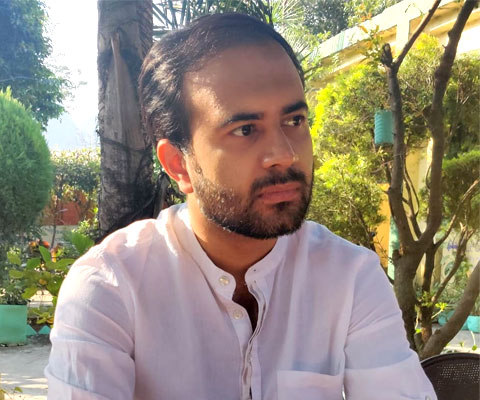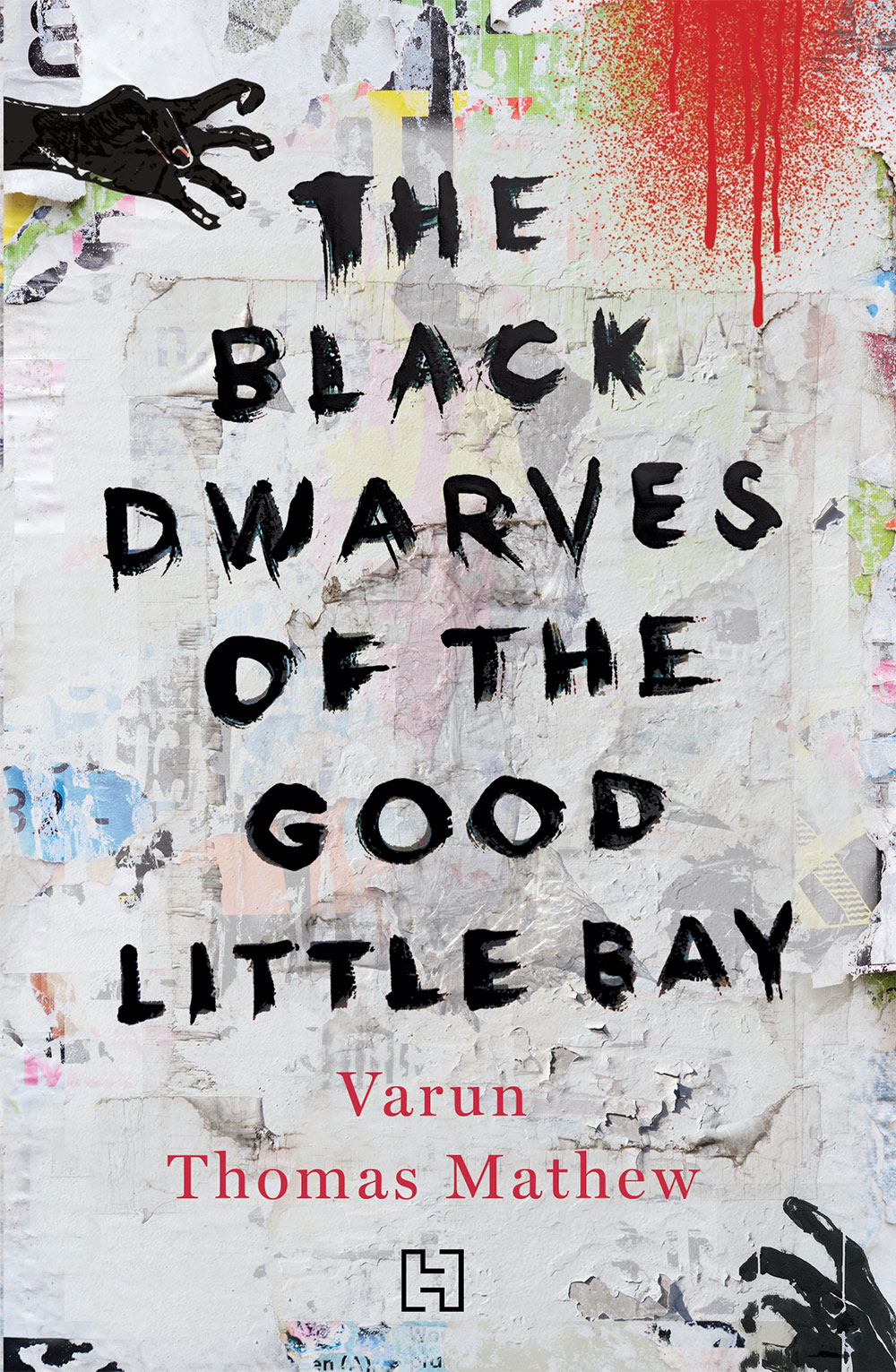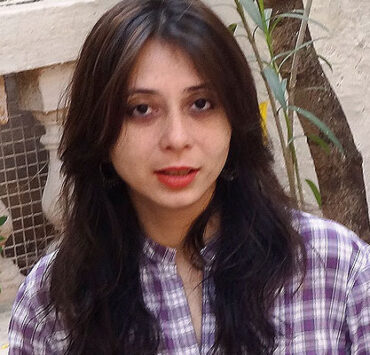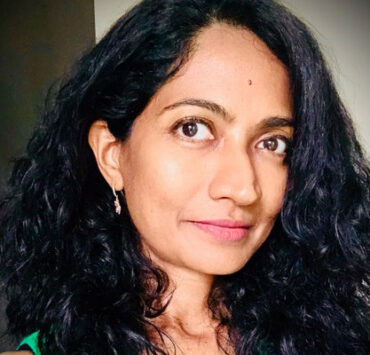Varun Thomas Mathew’s The Black Dwarves of the Good Little Bay paints a picture of a future India where the sins of the past are almost forgotten.
The year is 2040, and development has finally freed India from deprivation, violence and division. In the wasteland where Mumbai once stood towers a technological marvel called the Bombadrome; inside, millions live in a state of narcotized suspended animation, their every want fulfilled, their every prejudice safely indulged. Nothing bad happens, because nothing happens at all. Only one man— the last remaining member of India’s once-famous civil service—knows the terrible cost paid for this false utopia, and he is determined to make everyone remember.
Mathew—a writer as well as a technology, public policy, and human rights lawyer and sometimes campaign manager—spoke to us about his exhilarating debut novel. Read on to hear his thoughts on the nostalgia of city life, the influence of the Hungry Generation, and the relationship between magic realism and memory.
(This interview has been lightly edited for clarity and length.)
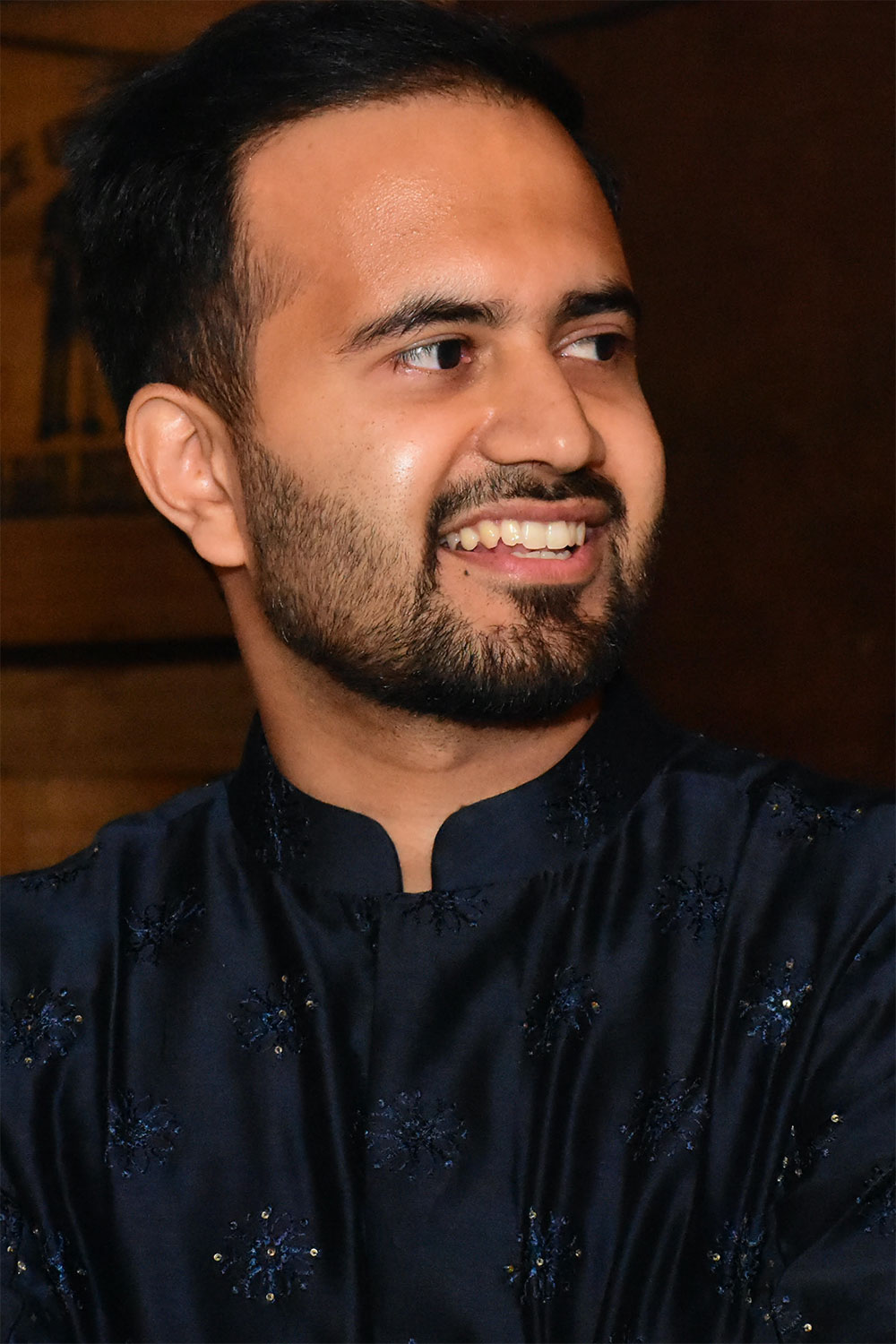
Varun Thomas Mathew is a writer as well as a technology, public policy, and human rights lawyer.
Your novel has a science fiction framing device, but the story itself feels like magic realism. When did you first encounter magic realism, and how has it influenced your writing?
The first time ever was Salman Rushdie’s Midnight’s Children. I loved it when I first started, but I didn’t understand it completely. I read it again, and I actually liked it a little less. And then I read it again for the third time and I liked it even more. I read The Satanic Verses and Grimus after that but I think Midnight’s Children was his best. Later I read Günter Grass, The Tin Drum, and in fact you can see a lot of parallels between the two books, there’s a whole discourse about how he drew a lot from that.
That was the initiation. And somehow magic realism is a great way of recording historical events, and the magical elements make it easier to go into them; I think prejudices that you have about events in the past are kind of obliterated when your imagination starts to work. Then of course I read [Gabriel García] Márquez and [Alejo] Carpentier and [Julio] Cortázar; the way they shed light on things that are happening in such an engrossing way. I’ve also been reading a lot of history, a lot of young historians that have come, and they have an incredible way of bringing things together in the form of narrative history. But there’s something about magical realism as a tool that speaks to me; it elevates the whole thing for me.
Do you think there’s something about magic realism that lends itself to examining certain kinds of cultural and social periods?
[The Uruguayan writer] Eduardo Galeano wrote a book called Days and Nights of Love and War, and it’s a beautiful rendition of extremely regressive times when the government was cracking down on everyone. And he brings out magazines, and through stories they weave in political messages, and [the stories are] completely banned, so people have to cross rivers, cross borders and read them and take them back.Not that India is, at least right now I mean, freedom of speech and expression is still fairly open here. With my book, I won’t name the publication, but there were a couple of publications that were supposed to bring out an excerpt. One of them was supposed to bring out the first letter that Saad wrote, before he was put in prison. I admit that was going a bit far without the context, and it was near Independence Day when the book came out. They were supposed to bring that out, and then Kashmir Article 370 [was revoked], and they were like, “I’m sorry, we just can’t do this.”
So in your book, a journalist character writes an angry letter that no one will publish, and publication of that same letter as an excerpt was cancelled in real life?
Right, they refused to carry that. And so I think given that context, and especially the troll army—I’m frankly far too unimportant and my book is a small scratch of the surface and they don’t care about it—but eventually these guys do hit out at authors and writers. So, sometimes it’s a good way of putting something in to print that will also last very long.
At your Jaipur Literature Festival panel, you talked about holding up a mirror to what is happening in India, without putting up people’s barriers. Many of the details of atrocities and tragedies in the book are familiar, but also made a bit strange. How did you calibrate that tension between reality and fiction?
I used to have a lot of arguments with peers about the present government, and they were taken in by the sheen and the promise. One of the first things I started doing in 2014 was maintaining a little scrapbook of things that would come up that I thought wouldn’t have happened in the tenure of the previous government. All of the cow lynchings and other things that became the source for the exhibits [in the book]. Every page, I could use some of these things.
There’s an incident in the book where Radha, his elder brother, when he was a child and was sent to school, he was killed because of his name. That happened in Bihar, and I started looking at the concept of name riots and you find it throughout Bihar all the time. And I thought, wow, these things need to be told. So some of the things that are happening in terms of the social events and the riots aren’t really new, but they’ve become more concentrated. And of course what’s happening on the other hand is complete destruction of the institutions, the political institutions, and that’s completely new, that’s never happened before. So that was the original intention behind bringing this about, and once I got the rough lot together, it just flowed from there, and I was able to cover it up with a bit of magic realism.
The writer Amitav Ghosh has argued that literary fiction must address the threat of climate change. Your novel has a lot of climate change imagery, which some characters view as a cosmic punishment for humanitarian sins. How do you think about the role of climate change in your fiction?
The thing about Mumbai is we’re pretty sure it’s going to disappear by the 2060s.
The other thing is, for this book, I did a fair amount of historical reading. And one of the things I found in a lot of places was, if there was a riot, there would be a famine in the years that followed. No connection, absolutely no connection. But I just begin to see—maybe in my magical realism-steeped brain—some sort of divine vengeance, and then it was just easy to run with that thread. So I looked a lot at the caste violence that happened throughout, and then it was easy to just pinpoint and link a lot of natural disasters with these sins.
The thing is, India is still also very superstitious. And so the idea that all of these horrible climate change atrocities could happen here, and they could be completely explained away by a politician in power just for his own gain, I mean we had that with our Prime Minister who came out and said, look, the winter isn’t getting colder, you’re getting older. I mean he simplified it to such a ridiculous extent, and he’s on tape saying it, and a lot of people believed him.
The book has a lot of beautiful descriptions of Mumbai; because they’re written from a future time when our current Mumbai no longer exists, the imagery evokes a sort of nostalgia for Mumbai as it is today. How did you approach writing about a city that’s been described so often in literature?
I have a pretty unique relationship with Bombay in the sense that after university it was where I first started working. I used to work in a corporate law firm, and apart from the sunrise, we’d be in the office for a long time. And so I’d come out at night at maybe 11 p.m., and the city was just completely alive, and it was the first time I had a fair amount of disposable income and I really enjoyed that, I loved everything about the city. I spent one and a half years there. And I used to go exploring, reading all of the books, I mean there’s so many books about Bombay.
When I started writing my book, I stayed away from it for about four-and-a-half years; I never visited, I stopped reading about it. I even missed a close friend’s wedding because I just didn’t want to go back. I avoided it like the plague, and the nostalgia of that feeling of loss just automatically built up.
I come from Bangalore, and the Bangalore that I grew up in is vastly different than the one today. Everything has changed: the music has changed, the architecture has changed, the crime has changed, everything has changed. When I walk through my old neighbourhood it’s almost like there’s nothing left over there. At the end of the day if you live in the city I guess you’ve got to be prepared for that, but there’s a sense of loss: I used to live in this little house, where now there’s just a bunch of grotesque glass buildings. So to that extent, it was like a pressure cooker and the nostalgia and the longing for Bombay just built up. And the government made it easier: they wanted to destroy every forest they came across, they wanted to build coastal roads everywhere. I finally went back to Bombay for the first time last year, for a bit of work, actually. I was walking through it, and everything had changed, the metro had come up everywhere, construction had made a lot of the neighbourhoods really ugly. They don’t let you walk across Marine Drive post-12.30 p.m. now, which is ridiculous; once you could be there until 4 a.m.
Your book has some interesting parallels and contrasts with Aldous Huxley’s classic Brave New World. Was that book in your mind at all as you were writing?
I love that book. It’s one of the defining books in terms of the dystopia, so subconsciously, definitely. Maybe I’m simplifying it a lot, but as I said in session [at Jaipur Literature Festival], Orwell’s and Huxley’s two worlds form the two different types of dystopia you can have. At the point when I started figuring out about what the Bombadrome would look like, I just leaned completely towards the Huxley side. So in terms of just giving me a direction, definitely.
You could have written this book with a very unsympathetic villain. Instead the antagonist is a demagogue, but he’s trying to fix real problems, so the question becomes, what price is worth paying?
I didn’t want to make this a book that was on either side, and frankly, when I look at the Bombadrome, if it could exist, I don’t think it would be all that bad an alternative compared to what’s going on right now in India—at least not for everyone. And even with regards to Alas, the chief minister character, I actually like the character, and I thought that in many ways you really do need to burn down what exists before you can build something new.
In the book, a man working as a manual scavenger suddenly begins painting city walls with sewage, and mysteriously everyone who looks sees a different image. That spurs a movement of artists and street theatre performers—called the ‘Black Dwarves’—who use striking, lurid images to confront the violence of the status quo. Why was that important to include?
A lot of the paintings, I mean the sewage paintings—what people see in them are references to instances that have happened. One thing that really influenced me was the Hungry Generation: in the 1960s there was a group of Bengali poets and writers who used a lot of degenerate art and poetry to throw a light into. They were always hauled up for obscenity and they just pushed the boundaries completely. Then I spent some time in Europe studying, and the Dada movement and a lot of German art as well, really influenced what dissent and art, what protest in art should look like.
With regards to the Black Dwarves, the thing about a lot of the atrocities that have been committed against Dalit people is that it’s recorded, but it’s not mainstream. And a lot of it is just hidden. My entire perspective with regard to this changed when I read a single legislation; it’s called the Scheduled Caste and Scheduled Tribe (Preventions of Atrocities) Act, 1989.
Forgive me for quoting, but it says anyone who commits any of the following acts: the first act is anybody who forces a member of a scheduled caste or scheduled tribe community to consume an obnoxious or inedible substance. The second one says anybody who leaves excrement in front of the dwelling place of a S.C.S.T. person; the third one says, anyone who forces them to consume human secretions, things like that.
It’s so detailed, and frankly, we know that this is happening, and it’s in our law—I’ve never seen another law that goes into that kind of detail. And then I just began to read about a lot of the Dalit atrocities that had happened here, and it made me sick. I mean, of course.
If you look at the founder of the Black Dwarves movement, when he is painting his first things, those are all scenes from Ambedkar’s life: like the man who falls off the cart. The Kilvenmani massacre is mentioned, it’s I think in 1969, a bunch of Dalit protestors, peaceful protestors, were burned alive, and there’s almost nothing which—I mean, there’s a monument in Tamil Nadu which commemorates that, but people don’t talk about it the same way they talk about Jallianwala Bagh. And it should be mentioned, our own people did that.




